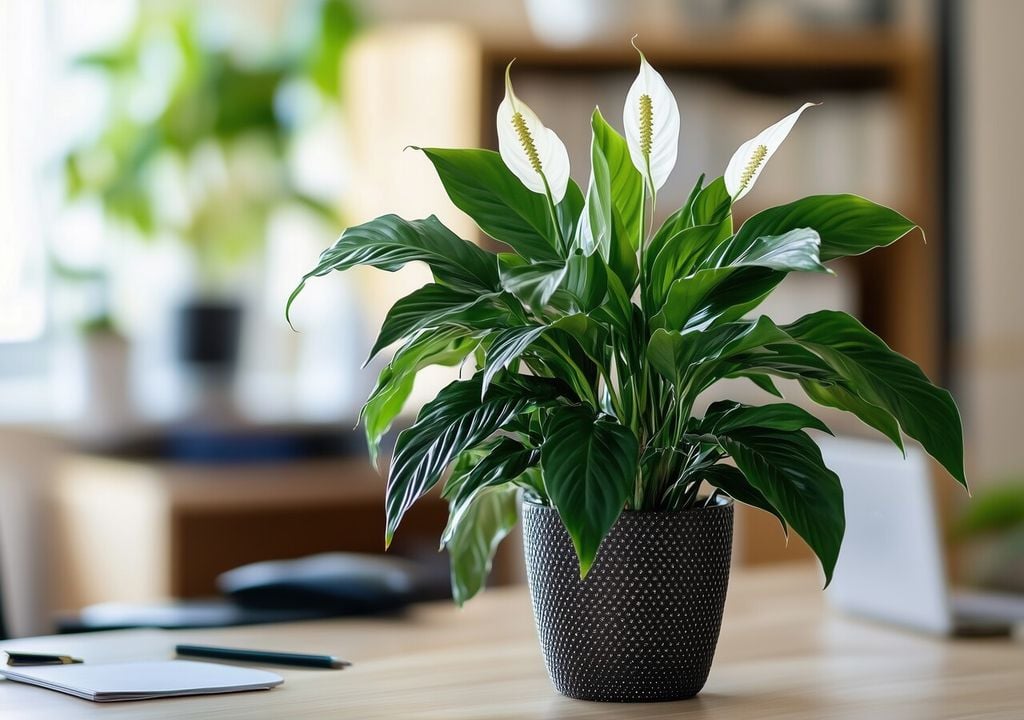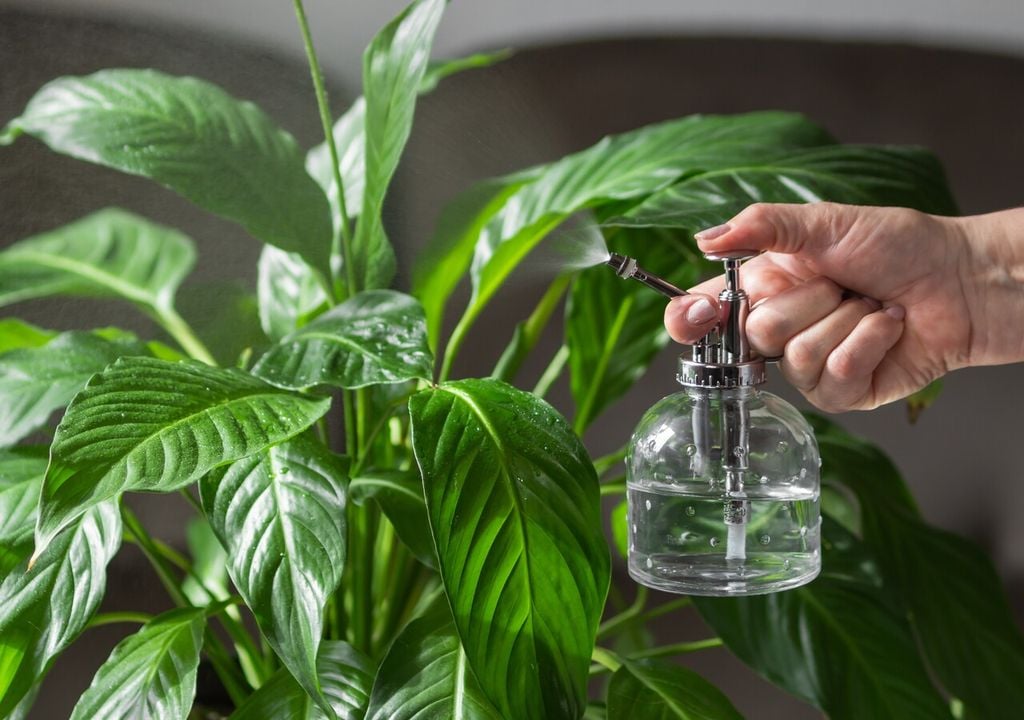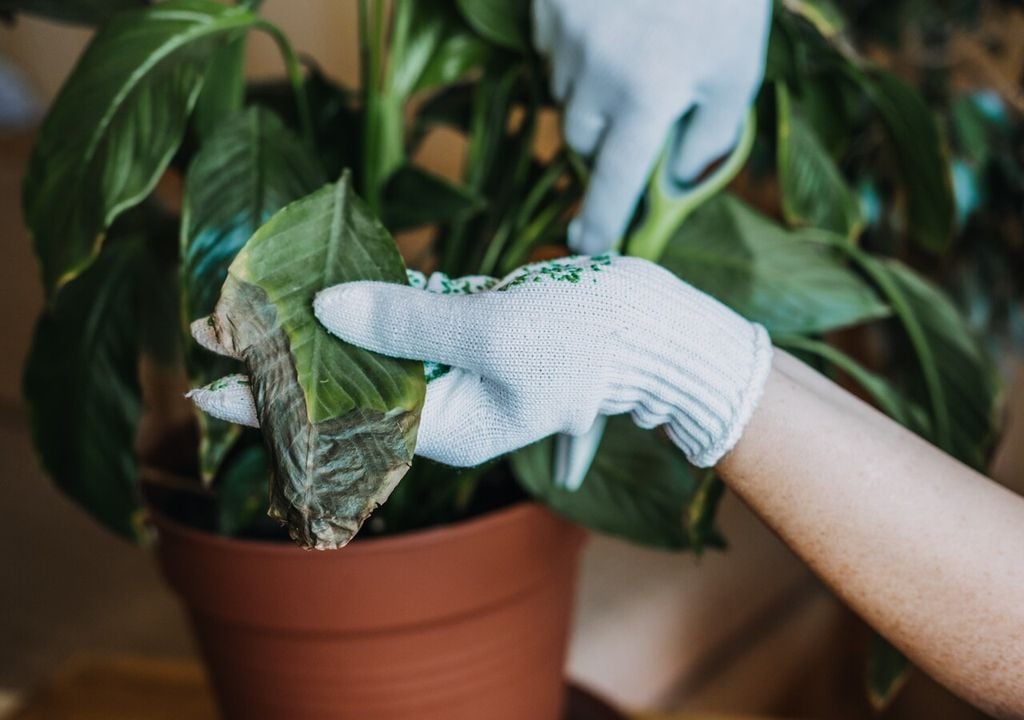How to Care for Peace Lily or Moses' Cradle: The Houseplant That Blooms Even in the Shade
With its glossy leaves and distinctive white flowers, the peace lily is one of the most cherished indoor plants. Learn how to care for it and let it beautify your home all year round.

The peace lily (Spathiphyllum wallisii), also known as Moses' cradle, is one of the most popular indoor plants for a very simple reason: it’s beautiful, hardy, and low-maintenance. Its delicate white blooms, which persist for much of the year, stand out against the deep green of its elongated leaves.
Native to the tropical rainforests of Central and South America, this plant belongs to the Araceae family, like the anthurium or monstera. Its ability to adapt to low-light spaces and its role as an air purifier have made it a favorite for offices, living rooms, and bedrooms.
Light, Water, and Humidity
One reason the peace lily is so highly valued is its adaptability to low light. However, it will bloom best if it receives bright, indirect light. Place it near an east- or north-facing window, always avoiding direct sunlight, which can scorch its leaves.
As for watering, the ideal is to keep the soil slightly moist but not waterlogged. A common mistake is watering too often or letting water accumulate in the saucer, which can lead to root rot. The best guide is touch: water when the top layer of soil is dry. During winter, reduce watering, as the plant enters partial dormancy.

The peace lily also needs good ambient humidity, especially in dry climates or homes with heating. You can mist its leaves occasionally, avoiding this while it's blooming. This creates a more suitable microclimate for its tropical needs.
Blooming, Fertilizing, and Repotting
Although the peace lily can bloom at different times of the year, its peak flowering season usually coincides with spring and summer. To encourage flowering, it’s advisable to apply a balanced liquid fertilizer for flowering plants every 3 to 4 weeks during those months.
If the plant stops blooming, first check light exposure, then soil quality and fertilization frequency. It may also be a sign that it needs repotting.

The peace lily usually needs repotting every two to three years, especially if roots begin to emerge from the drainage holes. The ideal time to repot is spring. Use a loose, well-draining substrate enriched with compost or humus.
Each division should include its own roots and leaves. Place them in separate pots and keep them in a warm, low-light spot until they establish.
What to Do If Problems Arise?
Although it’s a fairly hardy plant, the peace lily can show signs when something’s wrong. Some of the most common include:
- Droopy or soft leaves: usually indicates too much or too little water.
- Yellow leaves: generally caused by overwatering or salt buildup. Watering with filtered water may help.
- Dark spots: possible fungal infection from excess moisture or poor ventilation.

- Dry or brown tips: caused by low humidity or direct sun exposure.
- Lack of flowers: usually due to insufficient light, lack of fertilizer, or depleted soil.
With close observation and a few adjustments, these issues can be easily resolved.
Is It Safe for Homes With Kids or Pets?
The peace lily contains calcium oxalate crystals, a substance that can cause irritation in the mouth, tongue, and throat if any part of the plant is chewed. In more severe cases, it may cause vomiting or difficulty swallowing, especially in cats, dogs, or small children. While it’s not considered highly toxic or deadly, it’s important to keep it out of reach of curious pets or toddlers.
A good option in homes with curious pets or small children is to place the peace lily on high shelves, in hanging planters, or in restricted-access areas.








